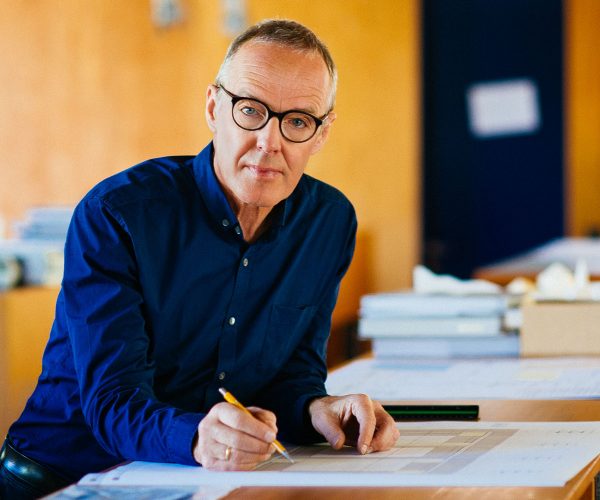Hermann Kaufmann, for who wood has been a passion since his childhood, has won the 34th Dr Toni Russ Award.
Vorarlberg’s architectural scene is a worldwide sensation. It is “The ramifications and impact of this scene are vast and cannot be underestimated.” said Friedrich Achleitner, the architectural judge of the 34th Dr. Toni Russ Prize. Vorarlberg has become the Mecca of contemporary architecture. The 48-year-old Bregenzerwälder Hermann Kaufmann, for whom wood has been a passion since his childhood, was presented, in front of an audience of over 400 guests at the Bregenzer Festspielhaus, with the 34th Dr. Toni Russ Award. “What is extraordinary is the great number of excellent architects and the depth the reputation has penetrated into the region. However there is not one single dominant star.” Hermann Kaufmann, who has been working together with Christian Lenz for several years in their architecture office in Schwarzach, has made Vorarlberg an international attraction. The work of architects is now estimated to draw in around 5000 visitors to Vorarlberg a year.
Flourishing
The prestigious speaker Achleitner, author of the only standard work on architecture in Austria, recalled the “roots of the revolution” of the internationally established Vorarlberg architects. In order to escape from the legal constraints of the civilian technician’s test, they formed the group of the Vorarlberg architects, led by Hermann Kaufmann. The “young savages” have evolved and calmed down a little, today it is the “Vorarlberg School”, consisting of some 40 to 50 architects who all pull together for the region, says Hermann Kaufmann. Their common language is simple and clear.
Beauty of Wood
When Achleitner closed his presentation of the award, he pointed out to the gathered crowd the rediscovery of the aesthetics of old woodworking and treatment methods. He went on then to say “An important part is the adaptation of space to suit the diverse living needs, the discovery of open spatial structures, which were very much in line with timber construction. Kaufmann considers the architecture, depending on the buildings purpose, and uses his abilities to deliver multiple forms. Its aesthetic value is not an isolated one, but a quality derived supports a higher need, in the cultural sense.”
Do not stop
Kaufmann himself, who has planned around 300 objects to date – 80 percent of them in wood – wants to go further: “We must not grow too comfortable and satisfied with ourselves, but we must go beyond the boundaries we create for ourselves. Standardization is necessary for this. Together with Anton Kaufmann, Wolfgang Ritsch and Roland Gnaiger, he is considering a forum for the exchange of experiences in the region. Kaufmann himself is the Head of Timber Construction at the Institute for Construction Engineering and Design at the Technical University of Munich.

